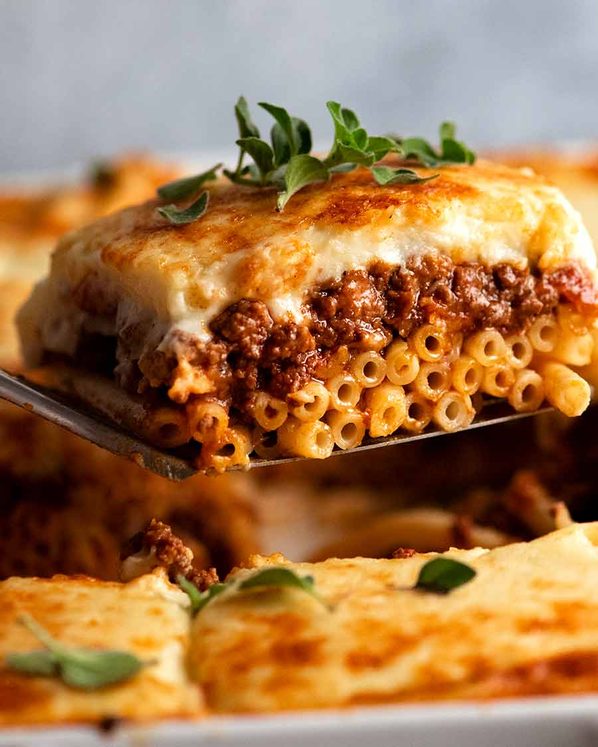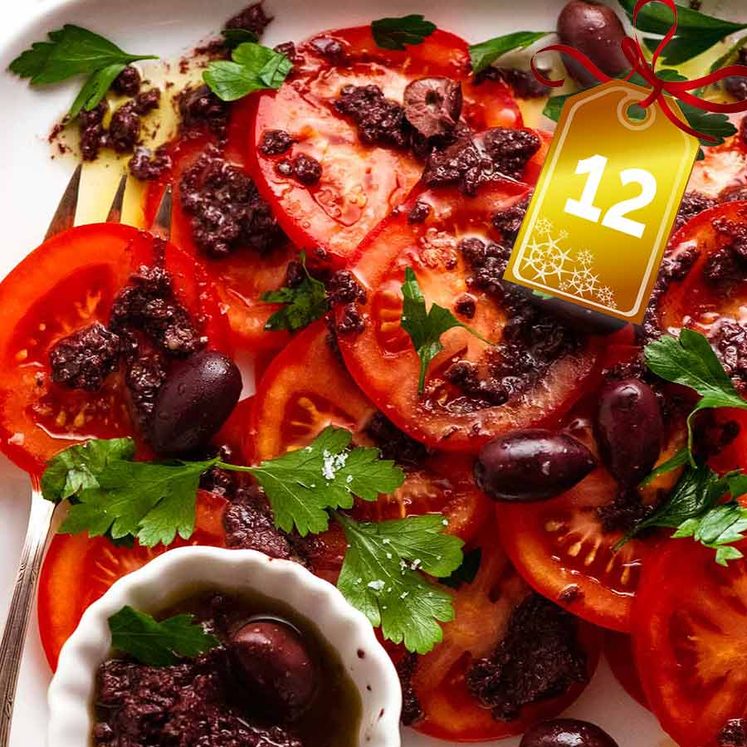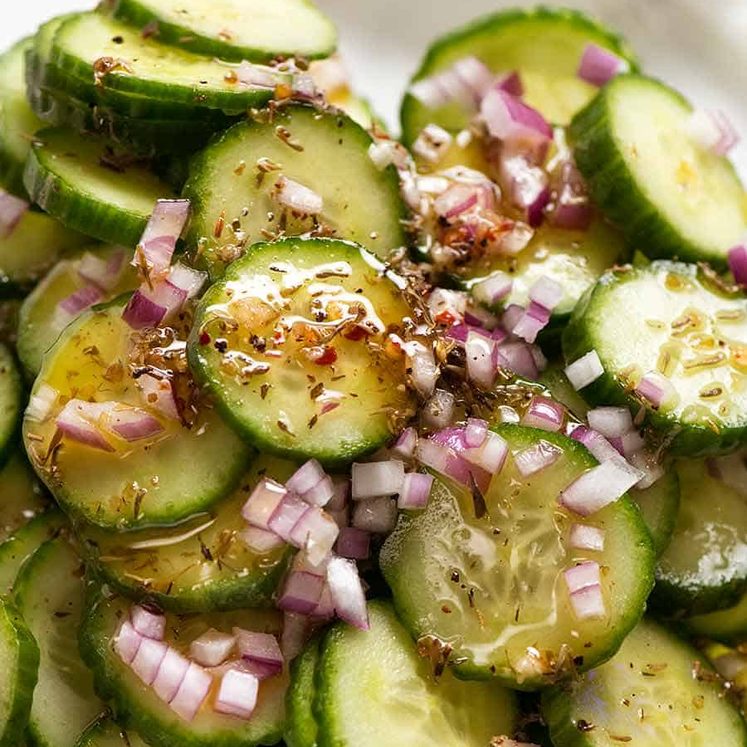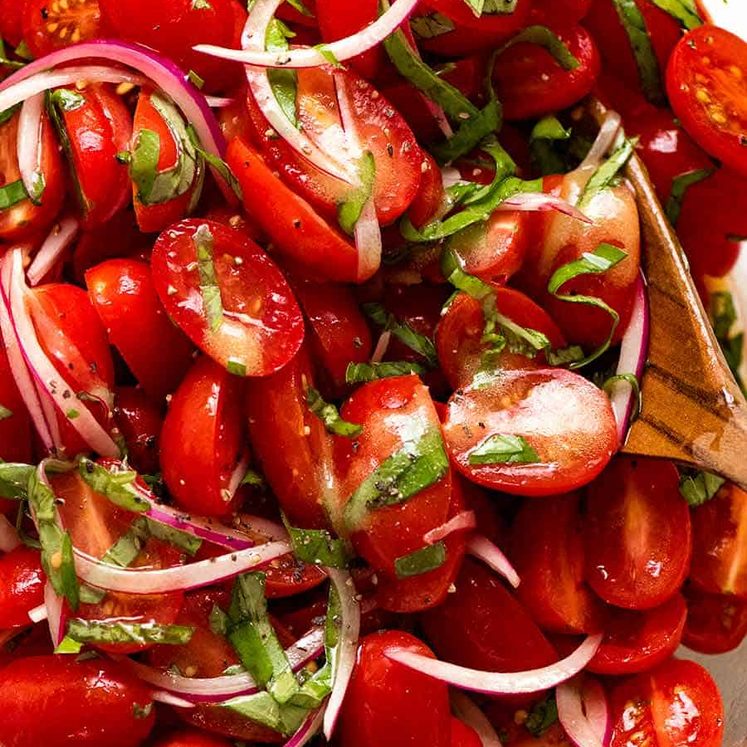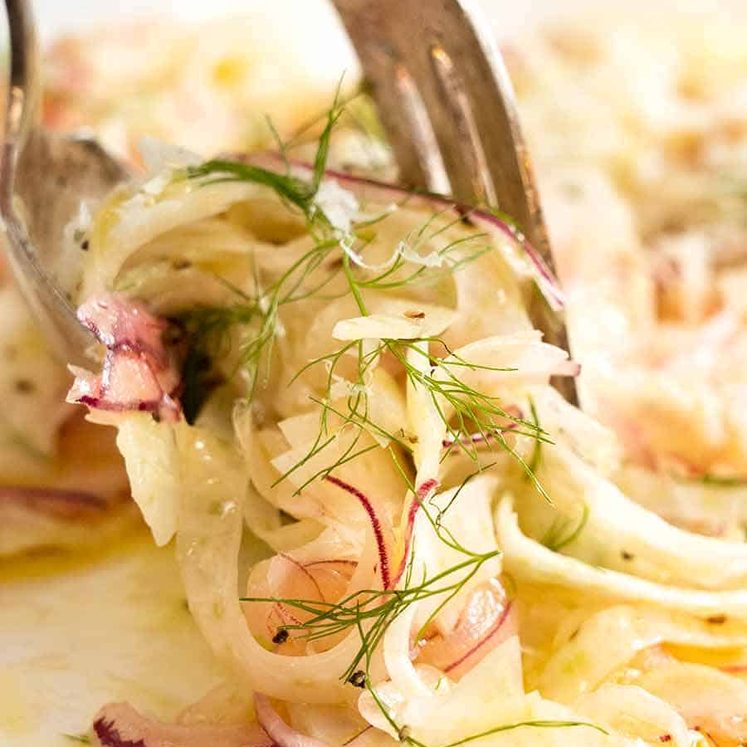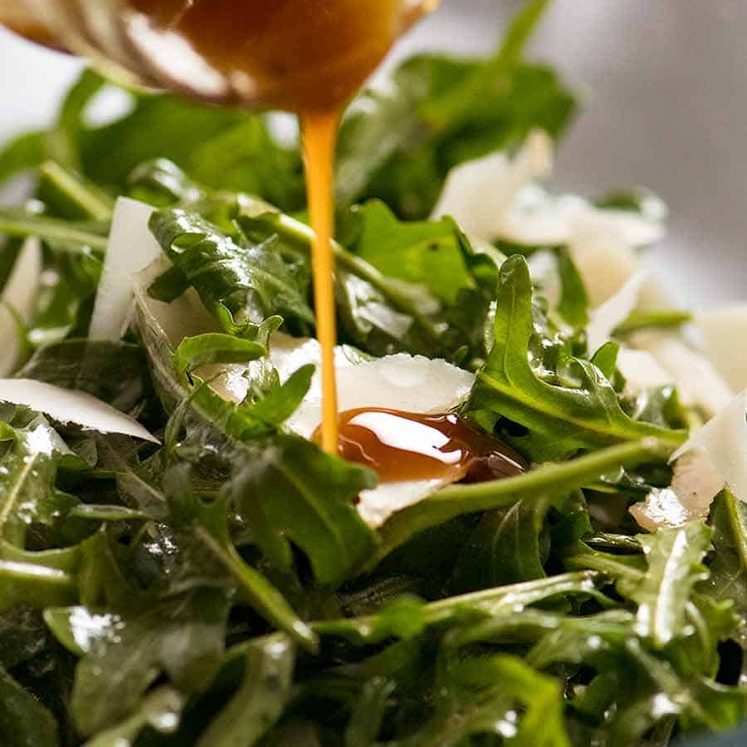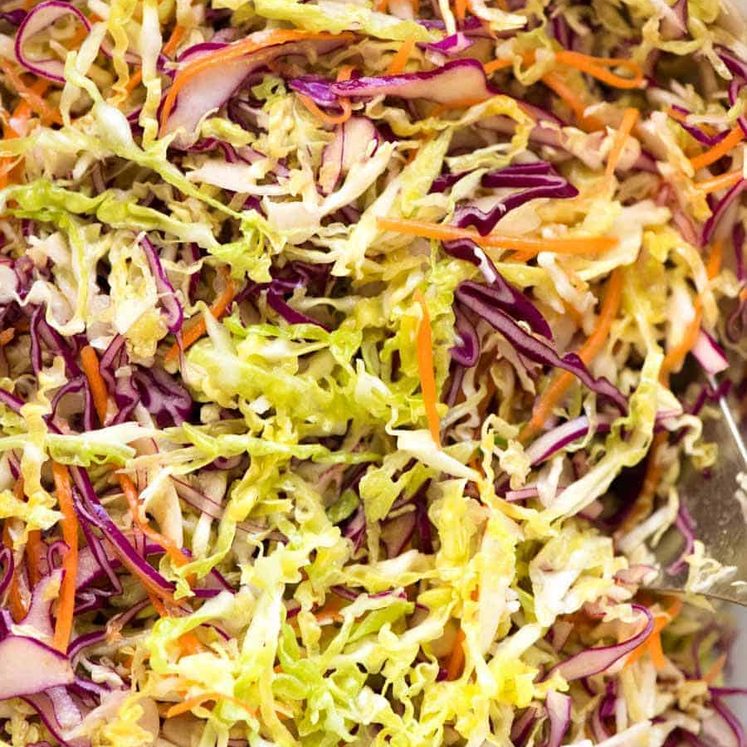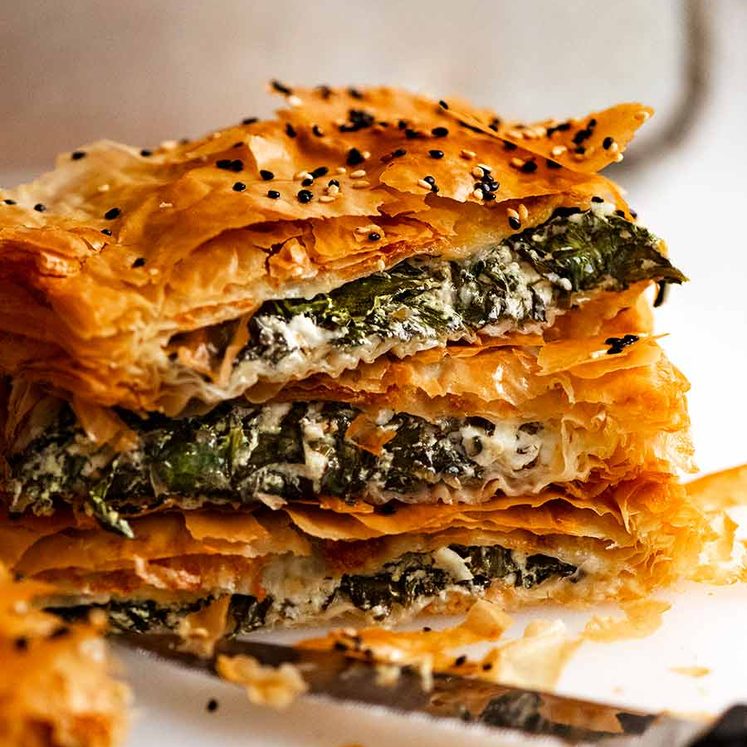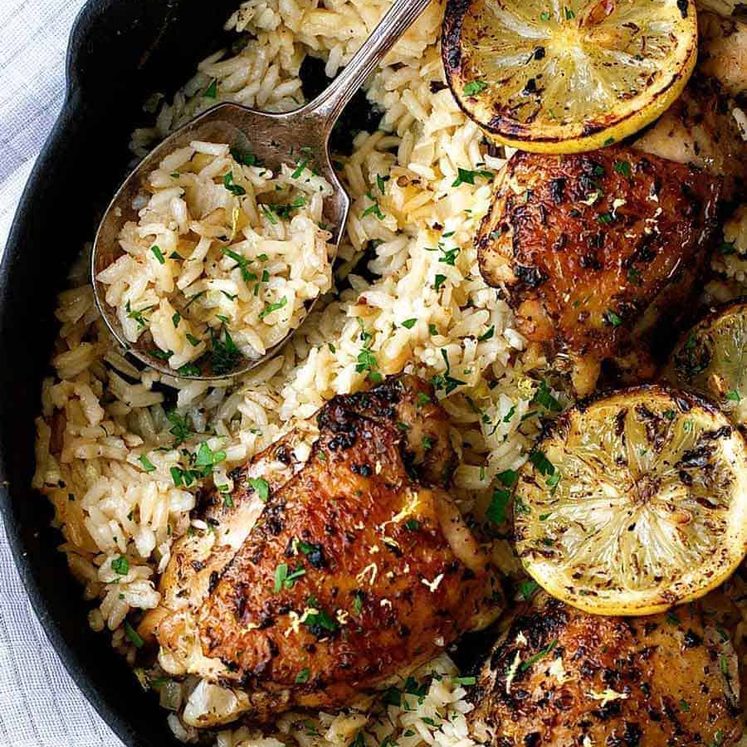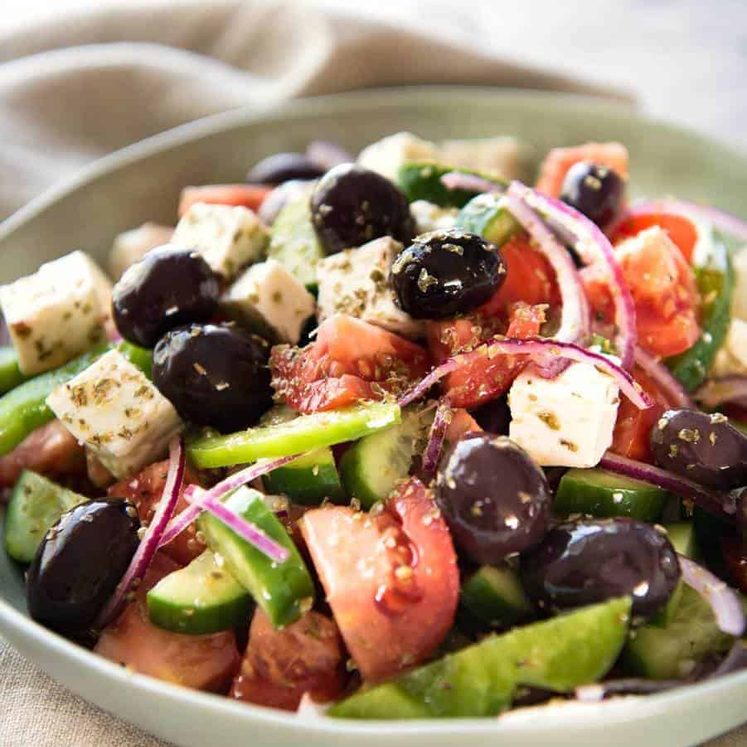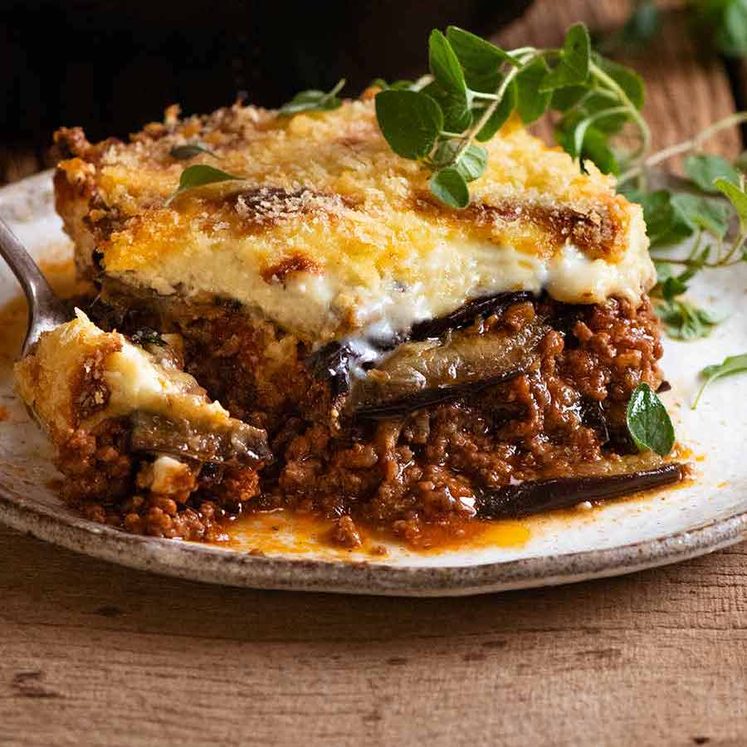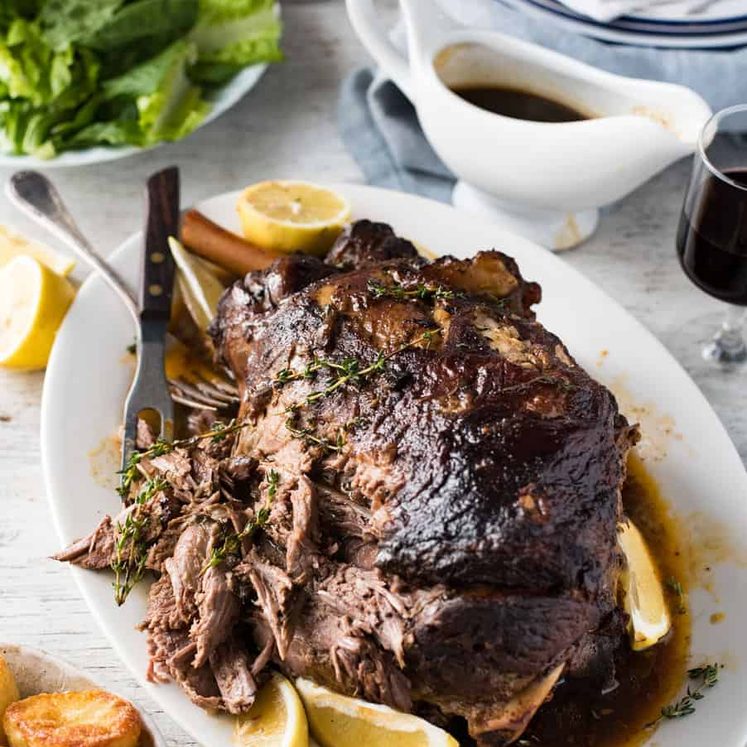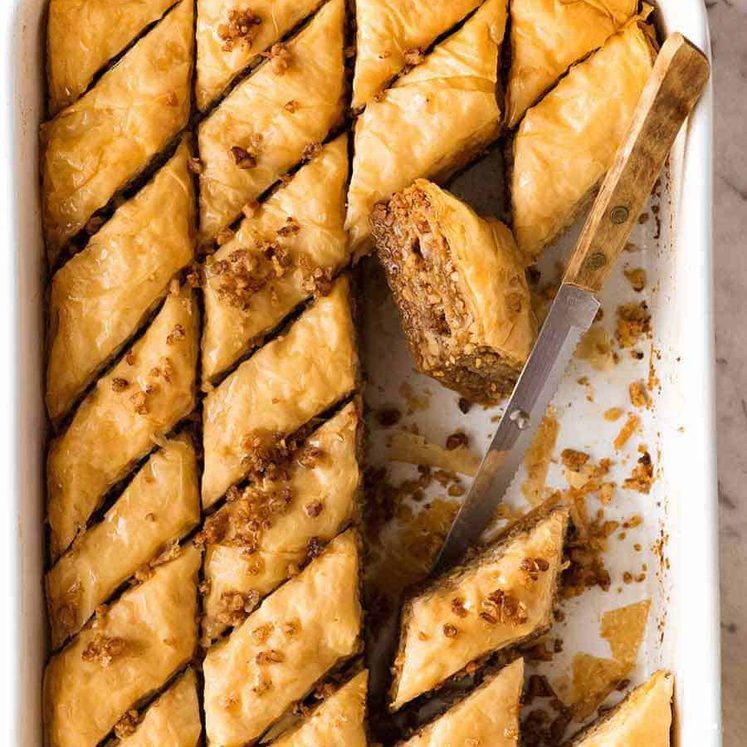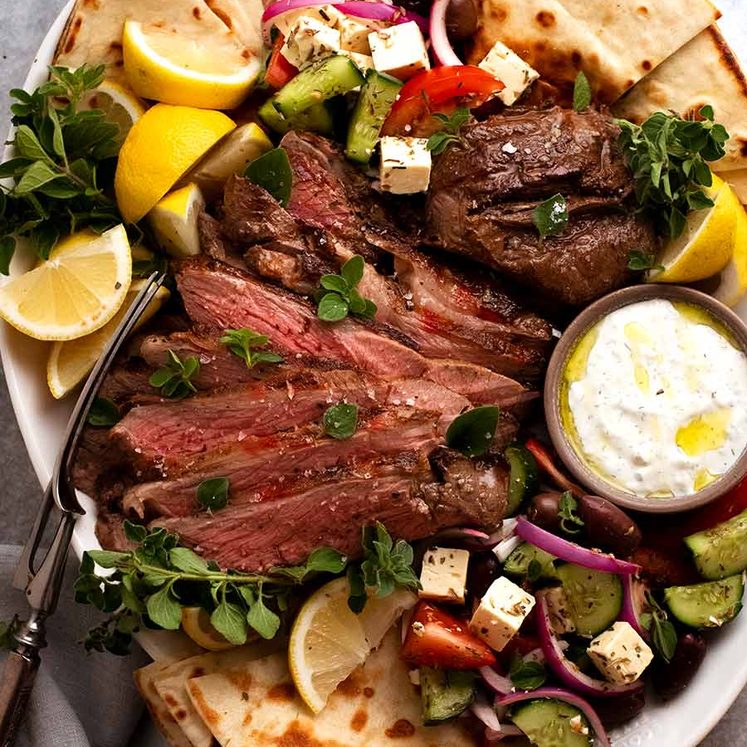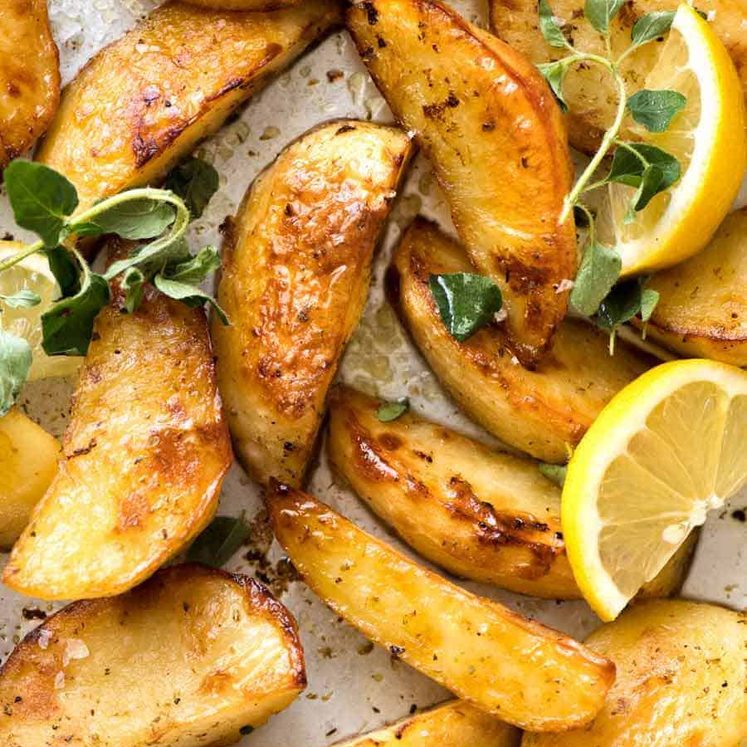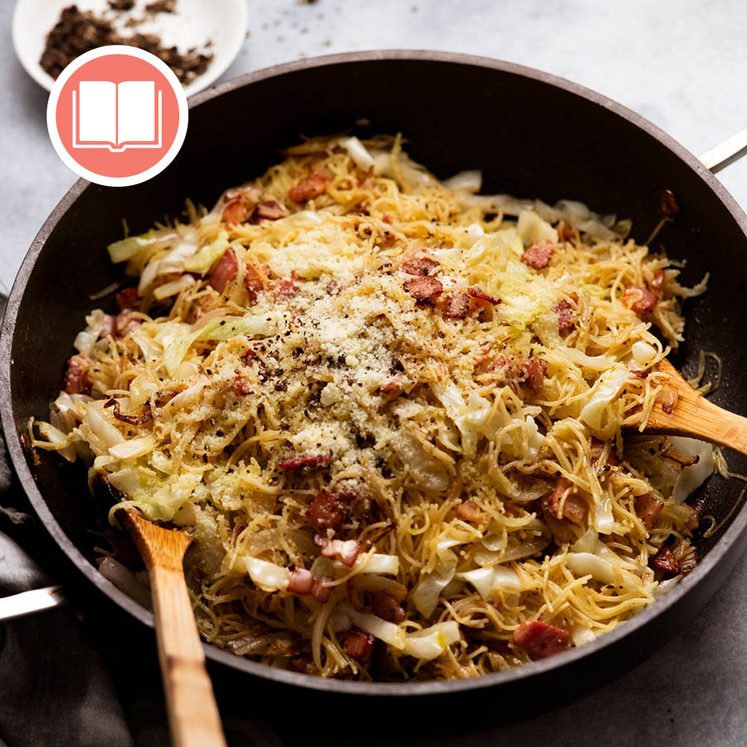Pastitsio – with layers of pasta, a rich cinnamon-spiked red wine meat sauce, topped with a thick layer of cheese sauce, this is Greece’s answer to Italian Lasagna. Let the fun begin!

Pastitsio – Greek pasta bake
Pastitsio is so much more than just another pasta bake. A step up from Baked Spaghetti and – dare I say it – even America’s famed Baked Ziti (which regular readers know I hold in high esteem!), this is Greece’s version of classic Italian Lasagna.
We love how it slices neatly with the layers clearly visible, and the striking tubular Greek bucatini-style pasta.
We love how the rich red wine, tomato and meat sauce is spiked with cinnamon and cloves, giving it uniquely Greek personality rather than “just another meat sauce”.
And we (Cheese Monsters in particular) love the extra thick, cheesy Béchamel sauce topping. The Greek’s have not skimped on any element here. It’s all about abundance!
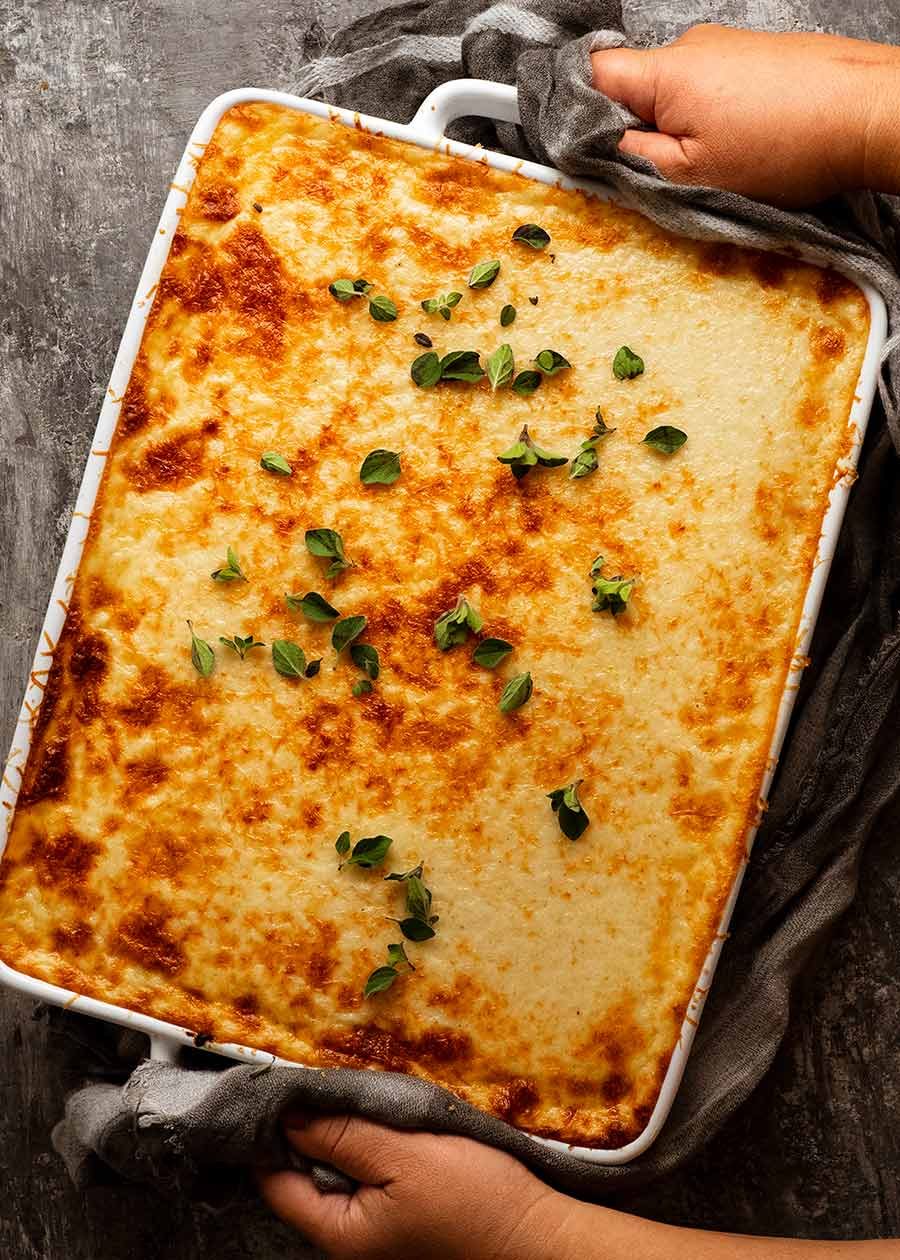
What you need for Pastitsio
There are 3 parts to Pastitsio:
-
Feta-tossed pasta;
-
Greek meat sauce – Like Bolognese sauce, but thicker and scented with cinnamon and cloves which you also see in Greek Moussaka; and
-
Greek Béchamel Sauce – Thickly laid and thicker set than you traditionally see in things like Italian Lasagna.
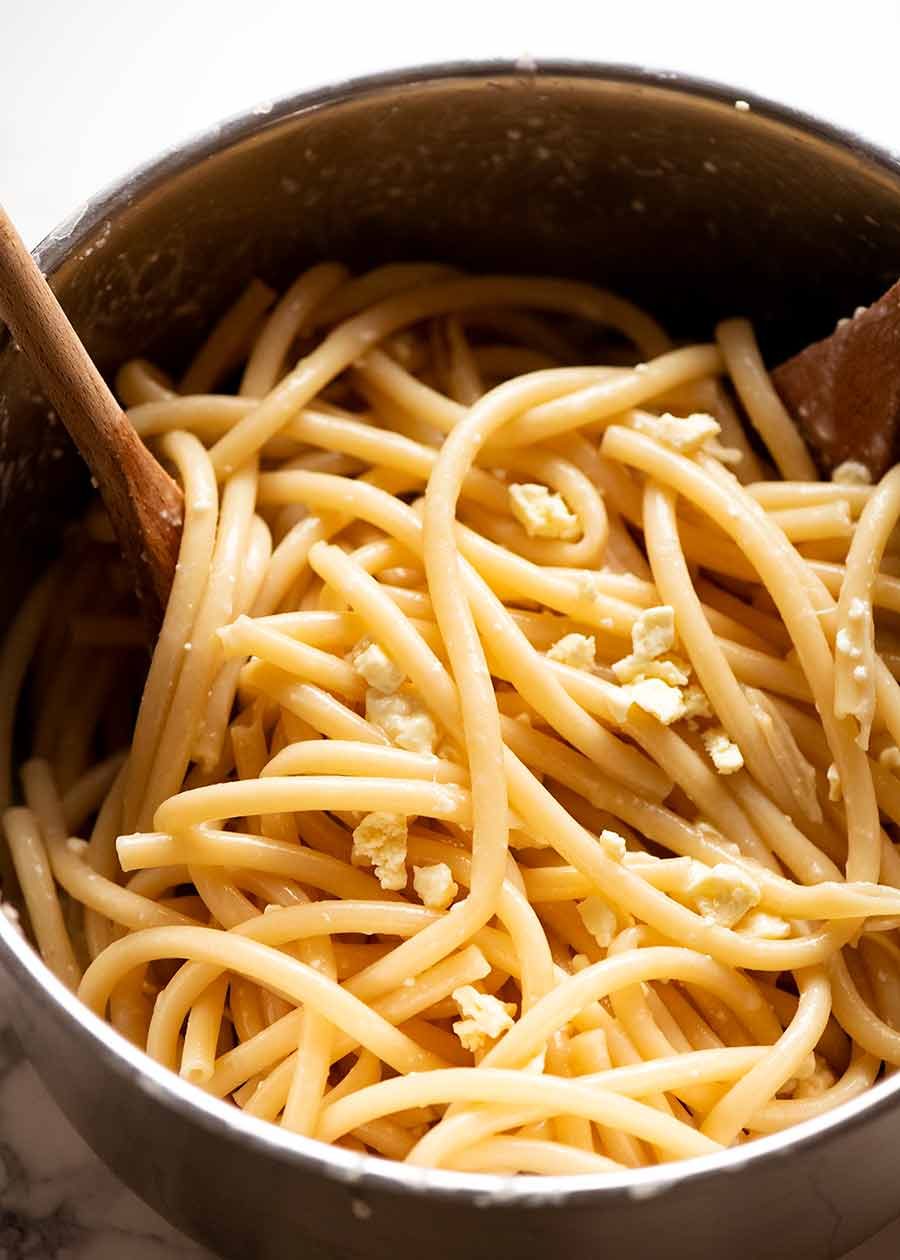
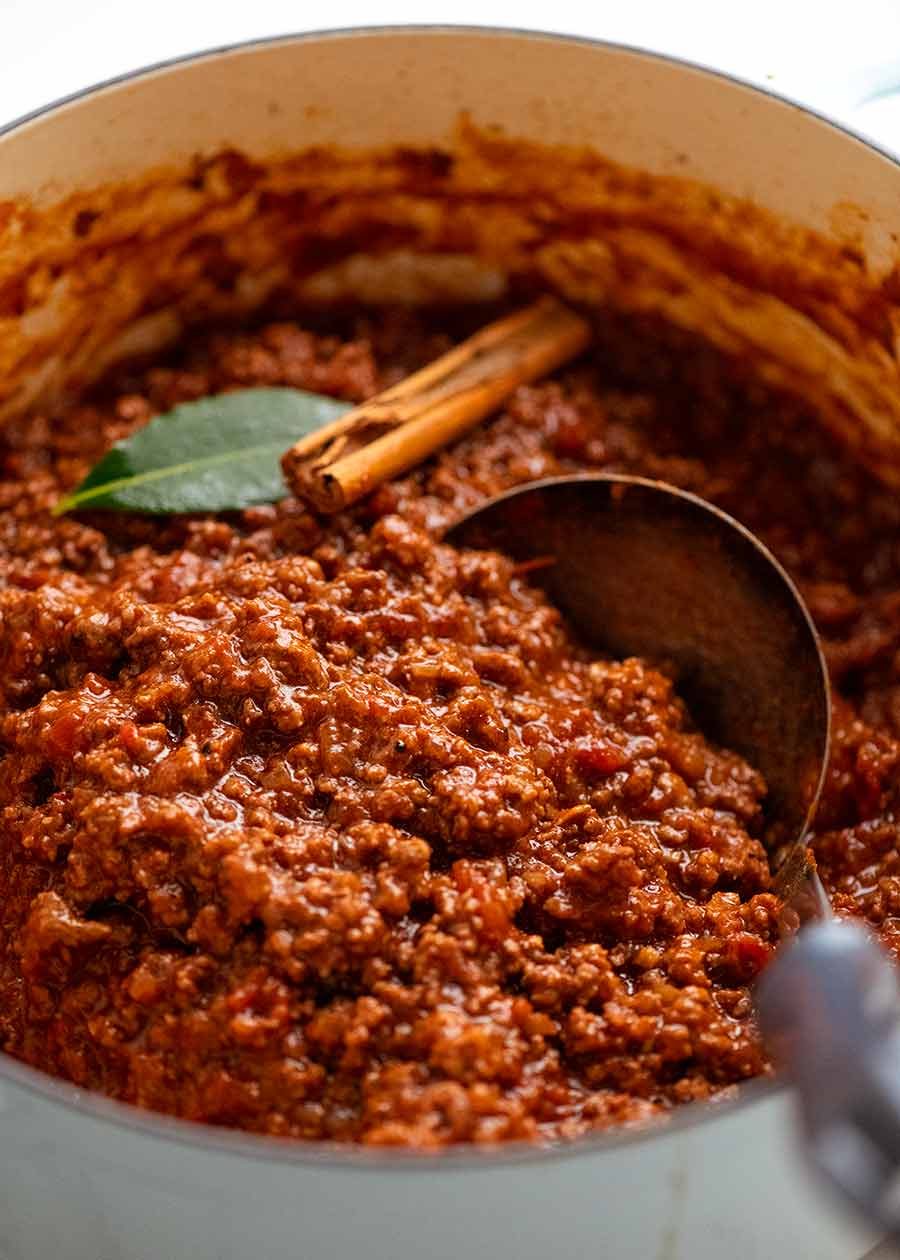
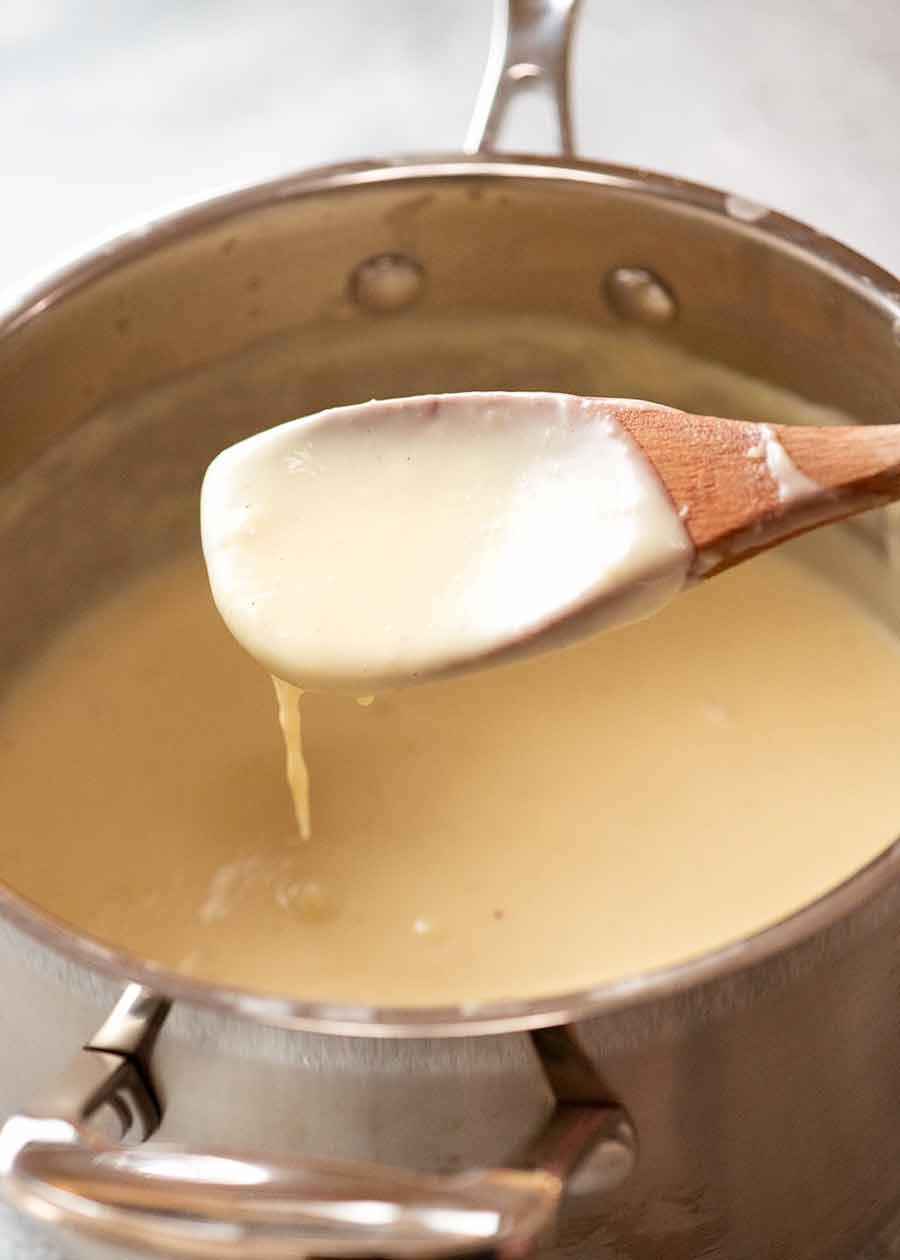
1. Feta-tossed pasta – Thick bucatini
The unique thing about the pasta layer of Pastitsio is the feta cheese tossed through it (yum!) and the addition of egg whites. Feta adds flavour while the egg binds the pasta together so you can cut neat slices, as pictured above.

1.1 Ingredients for the Pastitsio pasta layer
Here’s what you need for the pasta layer:


Greek bucatini
The pasta traditionally used in Pastitsio is a thick bucatini-style pasta called “Pastitsio pasta No. 2”, pictured below. It’s a tubular pasta – like a really thick spaghetti with a hole running through it. However it’s thicker than Italian bucatini , such as bucatini used in this Zucchini pasta.
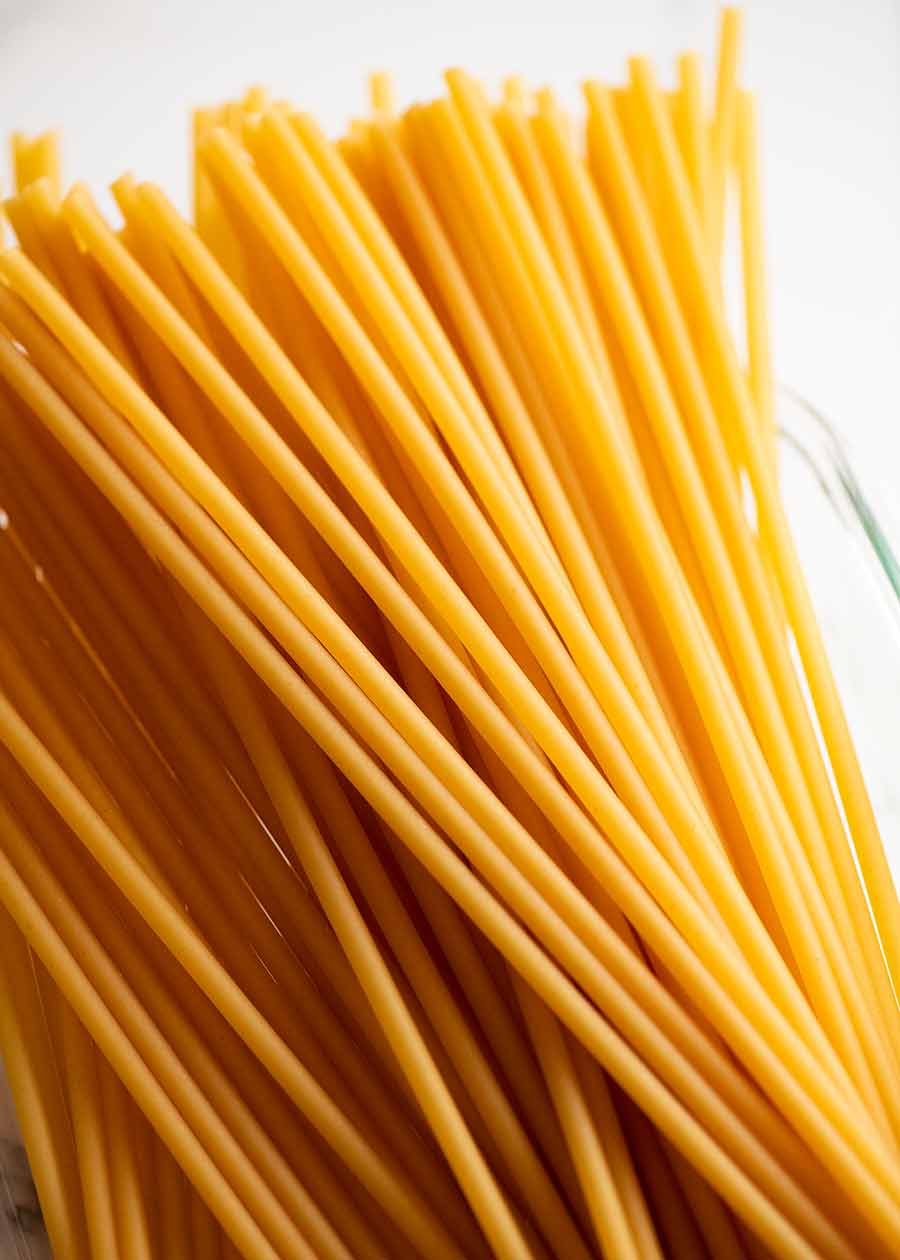
Where to find Greek bucatini-style Pastitsio pasta No. 2
You’ll find Greek Pastitsio Pasta No. 2 at European delis and grocers around Sydney. I found the Misko brand (pictured) at a fruit & veg store in Top Ryde (Sydney) which has a good stock of European goods.
Can’t find Pastitsio pasta?
Honestly, don’t get too hung up about it. Use ziti or penne instead if you want it to look similar when you cut it. Otherwise, ordinary Italian bucatini – sold in the pasta aisle of everyday supermarkets these days – or really, any pasta is just fine. It won’t alter flavour, just how it looks!
2. Pastitsio meat sauce
Making the meat sauce is really no different to making your favourite Spaghetti Bolognese. It’s very straight forward! But there’s two important differences:
-
Cinnamon and clove – As used in traditional Greek Moussaka, a subtle perfume from these spices is what makes the meat sauce Greek, rather than a generic Bolognese; and
-
Thicker meat sauce – The sauce is much thicker than Bolognese Sauce. This is intentional so it sits comfortably above the pasta layer, rather than trickling down through it. This is how you get the neat layers!

Here’s what you need for the meat sauce layer:

No boat-rockers amongst the above ingredients. Red onion is often preferred in Greek cooking rather than the typical brown/yellow onions.
And as noted above, the added spices that make this a Pastitsio meat sauce rather than an Italian-style one are cinnamon and cloves.
2.2 How to make Pastitsio meat sauce
As for making it, just pretend you’re making Bolognese! Unlike Bolognese however where a long and slow cooking can be optional, the Pastitsio meat sauce needs to be simmered for a good hour to reduce the sauce so it’s really thick.
This makes the meat sauce sit on the pasta, rather than mixing through the pasta layer, so you get distinct and tidy layers. The added bonus is that the longer simmering time makes the beef super-tender and really intensifies the sauce flavours.

Tip: Cool meat sauce before use
If time permits, let the meat sauce cool before layering over the pasta. It thickens and holds together even more when cooled first, providing even better visual definition between the pasta and meat sauce layers when you slice it, as pictured in the photos in this post.
In fact, if you can make it the day before and leave it overnight in the fridge, the flavour also gets even better!
3. Greek Béchamel Sauce
The Greek Béchamel sauce used in Pastitsio differs from the typical white sauce you see on things like Lasagna:
-
Thicker layer – About twice the volume used in typical Lasagna. No complaints over here, I’m personally a big fan of lots of cheese white sauce!
-
More set – It’s set almost like a custard that you can cut through, as opposed to being creamy like Béchamel typically is. It’s thickened using a combination of a slightly higher flour-to-liquid ratio, as well as the use of egg yolks (which also enriches the sauce beautifully!)

3.1 What goes in Pastitsio Béchamel sauce
Here’s what you need to make the Pastitsio Béchamel sauce:

-
Butter, flour and milk – All the usual suspects you need to make a basic Béchamel / white sauce;
-
Kefalotyri Cheese – A traditional Greek cheese made from sheep or goat’s milk. It tastes somewhat like parmesan but is not as salty or sharp. More on Kefalotyri below. Sold at Woolworths and Coles in Australia, or European/Greek delis. But don’t go out of your way to hunt it down. Readily-available cheeses like Parmesan or Romano make perfectly acceptable substitutes (*she ducks as 10 million Greeks throw rotten tomatoes at her*);
-
Nutmeg – A classic inclusion with Béchamel, but not the end of the world if you don’t have it. Freshly ground best, if you have it; and
-
Egg yolks – This helps the Béchamel Sauce set better so the thick layer holds its shape when you cut slices.
The egg whites are used separately for the pasta, acting as a “glue” to hold the pasta together when you slice it. Full visual effect!
Kefalotyri Greek cheese
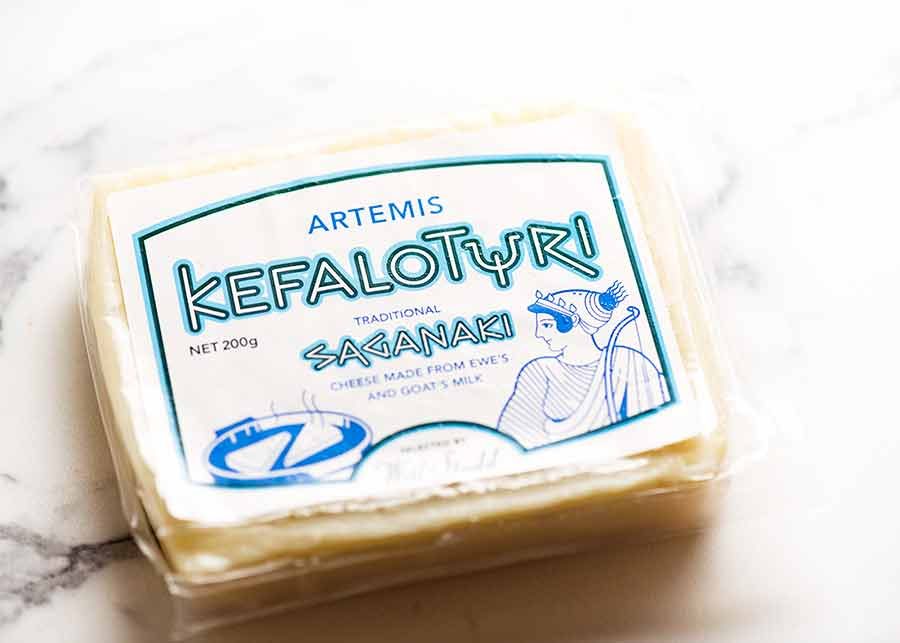
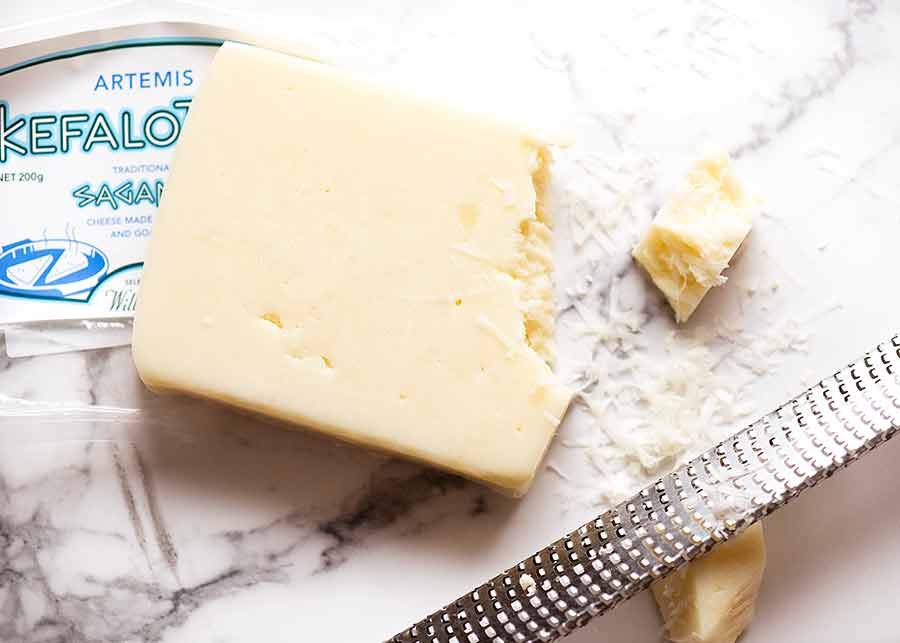
This is a firm, traditional Greek cheese made from sheep or goat’s milk. It’s used to top the Pastitsio to give it a delicious golden crust as well as stirring through the Béchamel Sauce to give it flavour.
Kefalotyri cheese is a hard cheese with a salty, savoury and piquant taste, similar to Parmesan. However it’s not as salty as parmesan.
Believe it or not, these days it’s available at Woolworths and Coles in Australia! 🙌🏻 Pictured below.
Best substitutes (in order): Kefalograviera (a related, hard Greek cheese), pecorino, Parmesan, Romano.
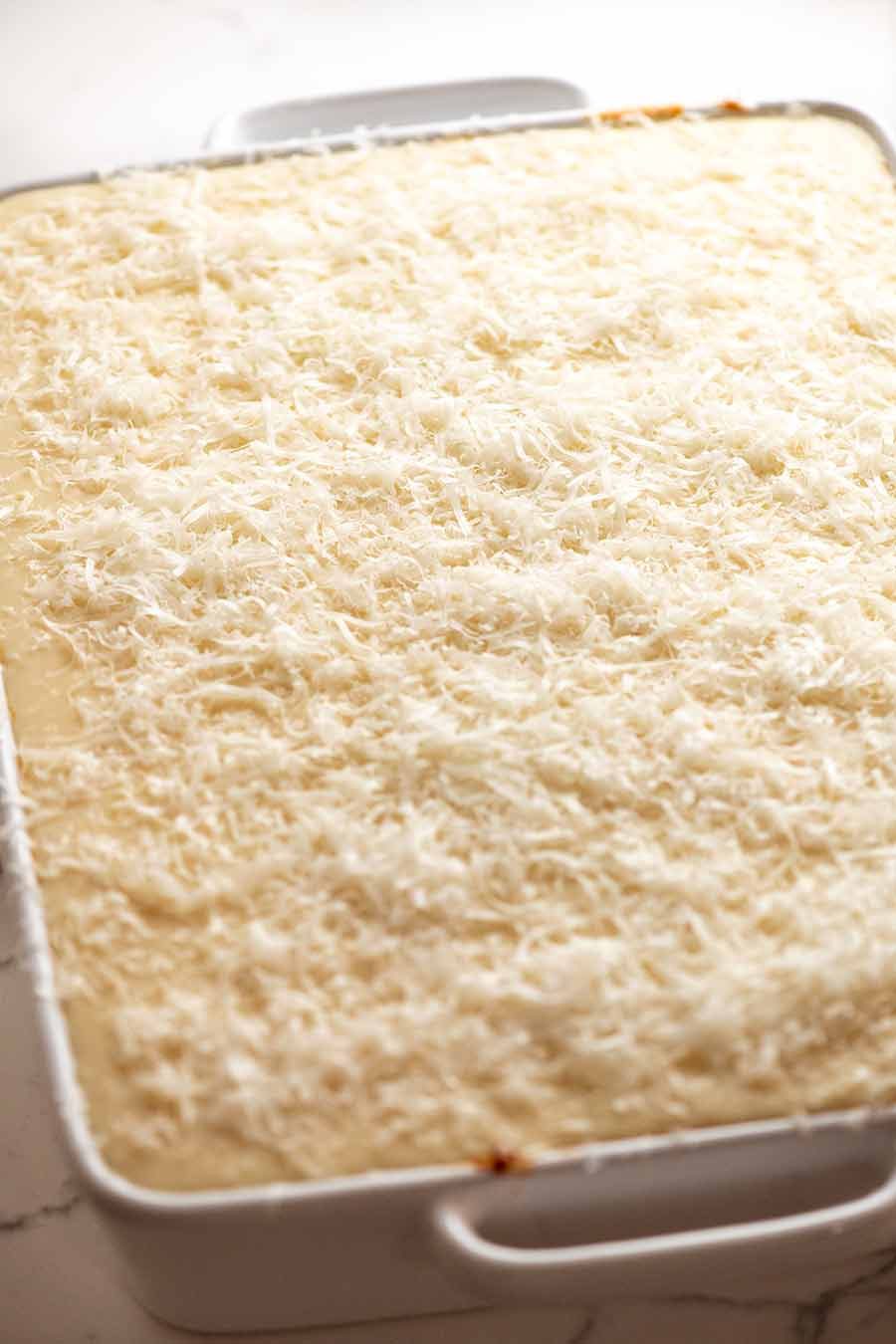
Use leftover Kefalotyri to make Saganaki!
What to do with your leftover Kefalotyri? Make saganaki, a popular melted cheese Greek appetiser! Cut leftover Kefalotyri into 1.5cm / 1/2″ slices, dust with flour then pan fry in olive oil until golden on the outside, melted inside. Squeeze over a bit of lemon, serve with bread for. It’s AMAZING. You can thank me later…!! 😉
3.2 How to make Pastitsio Béchamel sauce
Here’s how to make the Pastitsio white sauce:
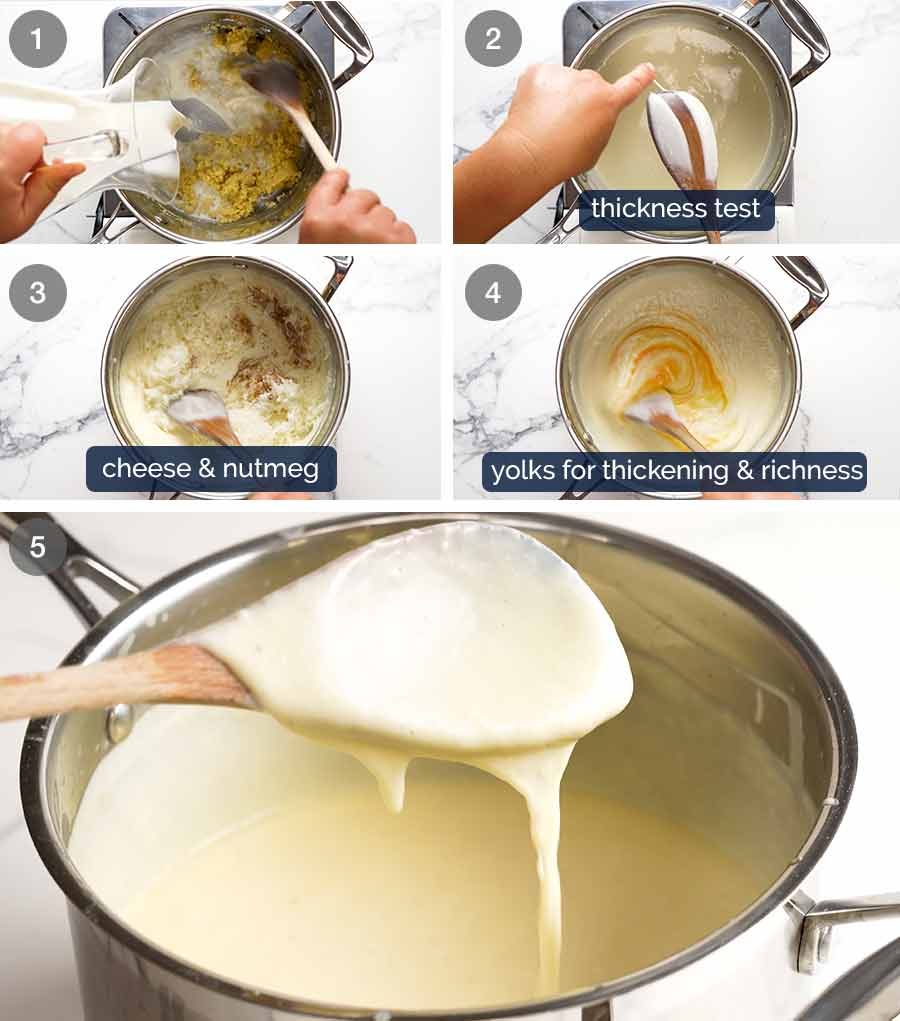
-
Make a roux – Melt butter, then add the flour and cook it out for a minute. Slowly add the milk in while stirring – this is how you can make a lump-free Béchamel sauce without having to use a whisk! The trick is to make a “paste” first, then add the rest of the milk that the paste easily dissolves into.
Lumpy sauce? Don’t worry! Just give it a good whisk and it will smoothen out.
-
Cook until thickened – Stir over a medium heat until the sauce thickens, and won’t thicken any further. The thickness test: The sauce should fully coat the back of a spoon and when you draw a path across with your finger it doesn’t disappear;
-
Flavourings – Stir in cheese and nutmeg. The cheese will also thicken the sauce slightly more;
-
Egg yolks – Remove sauce from the stove and let it cool for a few minutes. Then whisk the egg yolks in. Make sure you mix straight away once you add the yolks otherwise they may scramble in the sauce!!
-
Done! While warm, the sauce should be pourable but quite thick, like pictured. Cover with a lid and keep warm until required. If it goes cold, it will get too thick to pour. If that happens just reheat it over a low heat until it becomes pourable again.
4. Assembly!
You need a BIG casserole dish for Pastitsio! A typical 9 x 13″ pan won’t cut it, it’s not deep enough. My baking dish is 33 x 22 x 7 cm / 9 x 13 x 2.75″.

The next steps, along with some tips I figured out through trial and error:
-
Pasta direction – Lay out the pasta so they are (mostly) in one direction if you want the visual effect of the pasta holes when you cut it, as pictured in the photos in this post;
-
Cool meat sauce – A cool meat sauce will make the layers more distinct. Because it’s thicker and more emulsified, it sits on top of the pasta rather than seeping down through it. It also provides a firmer bed onto which the Pastitsio white sauce is poured, helping that layer also stay distinct;
-
White Sauce – Pour over and spread. If your white sauce cooled down and is too thick to pour, just reheat gently on a low stove until it’s pourable;
-
Grate over Kefalotyri (or parmesan if you can’t find it) – then bake until the top is golden; and
-
Rest for 15 minutes before cutting to serve. The longer it stands, the better it will hold its shape when cut. If you want really neat slices, make it the day before – reheat in the baking dish then cut!


What to serve with Pastitsio
I can’t think of anything more appropriate than a big, fat juicy Greek Salad on the side! This traditional salad is a lovely, refreshing contrast to the richness of Pastitsio.
But here are a few more side salads that I think will also go really well with Pastitsio:
Enjoy! – Nagi x
Watch how to make it
Hungry for more? Subscribe to my newsletter and follow along on Facebook, Pinterest and Instagram for all of the latest updates.

Pastitsio (Greek Pasta Bake)
#wprm-recipe-rating-0 .wprm-rating-star.wprm-rating-star-full svg * { fill: #343434; }#wprm-recipe-rating-0 .wprm-rating-star.wprm-rating-star-33 svg * { fill: url(#wprm-recipe-rating-0-33); }#wprm-recipe-rating-0 .wprm-rating-star.wprm-rating-star-50 svg * { fill: url(#wprm-recipe-rating-0-50); }#wprm-recipe-rating-0 .wprm-rating-star.wprm-rating-star-66 svg * { fill: url(#wprm-recipe-rating-0-66); }linearGradient#wprm-recipe-rating-0-33 stop { stop-color: #343434; }linearGradient#wprm-recipe-rating-0-50 stop { stop-color: #343434; }linearGradient#wprm-recipe-rating-0-66 stop { stop-color: #343434; }
Ingredients
Meat Sauce:
- 2tbspolive oil
- 3garlic cloves, finely minced
- 2red onions, finely chopped (sub yellow or brown onions)
- 1 kg / 2 lbbeef mince (ground beef)
- 3/4cupred wine, dry (Note 1)
- 800g / 28 ozcanned crushed tomato
- 2beef bouillon cubes, crumbled (stock cubes)
- 2tbsptomato paste
- 1tspwhite sugar
- 1bay leaf
- 1/2tspcinnamon powder
- 1cinnamon stick(or extra 1/2 tsp cinnamon powder)
- 1/4tspground cloves
- 3/4tspsalt
- 1tspblack pepper
Greek Bechamel:
- 100g / 7 tbspbutter, unsalted
- 3/4cupflour, plain/all purpose
- 1 litre / 4 cupsmilk, whole/full fat best but low fat ok
- 1/8tspnutmeg, preferably freshly grated
- 1/2tspsalt
- 100g / 3 ozKefalotyri Greek cheese (sub Parmesan or Romano), finely shredded (Note 2)
- 2egg yolks(egg whites are used in the pasta)
Pasta:
- 400g / 14 ozPastitsio No. 2 pasta / Greek bucatini(sub small ziti, penne or normal bucatini, Note 3)
- 120g / 4 ozfeta, crumbled
- 2egg whites(yolks used in Béchamel)
Topping:
- 75g / 3 ozKefalotyri Greek cheese (sub parmesan or Romano), finely grated (Note 2)
Instructions
Meat Sauce:
-
Heat in a large pot over high heat. Add garlic and onion, cook for 2 – 3 minutes until onion is softened. Add beef and cook, breaking it up as you go, until it changes from red to brown.
-
Add wine and and cook until the wine has mostly evaporated – about 3 minutes.
-
Add remaining Meat Sauce ingredients. Stir well, bring to simmer, then reduce heat to medium / medium low so it’s simmering gently. Cook for 45 min to 1 hour until liquid is mostly gone, stirring every now and then. It should be a thick mixture with little liquid, not saucy like Spaghetti Bolognese (Note 4).
-
Remove from stove and cool. Preferably to room temperature, otherwise for at least 30 minutes before assembling (lid off).
Greek Béchamel (Note 5):
-
Melt butter in a large saucepan over medium heat. Add flour and stir for 1 minute.
-
While stirring, slowly pour half the milk in. It should turn into a wet paste. Then again, while stirring, pour in remaining milk – the paste should easily dissolve so it’s lump-free. If not, just whisk vigorously.
-
Cook, stirring so the base doesn’t catch, for 5 minutes or until thick enough so it coats the back of a wooden spoon thickly and you can draw a path across it with your finger.
-
Remove from stove. Stir in nutmeg, cheese and salt.
-
Leave to cool for 5 minutes. Then whisk in egg yolks quickly. Place lid on and set aside. If sauce cools and gets too thick to pour, just reheat on a low stove until pourable.
Pasta (Note 6):
-
When you’re ready to assemble, cook the pasta per packet instructions, minus 1 minute.
-
Drain, then return to the pot. Leave to cool for 3 minutes, then stir through egg whites. Gently stir through crumbled feta.
Assemble and bake:
-
Preheat oven to 180°C/350°F (all oven types).
-
Place pasta in a baking dish (33 x 22 x 7 cm / 9 x 13 x 2.75″), arranging them so they are all going in the same direction as best you can (for visual effect when sliced). Make the surface as level as you can.
-
Top with Meat Sauce, then smooth the surface.
-
Pour over Béchamel Sauce, then sprinkle over the cheese.
-
Bake 30 min or until crust turns golden.
-
Cool for at least 10 minutes so you can cut neat slices with the layers neatly visible. Serve!
Recipe Notes:
Nutrition Information:
10 more delicious Greek recipes
Life of Dozer
A familiar vision – rear view of Dozer’s rump bounding into the water.

